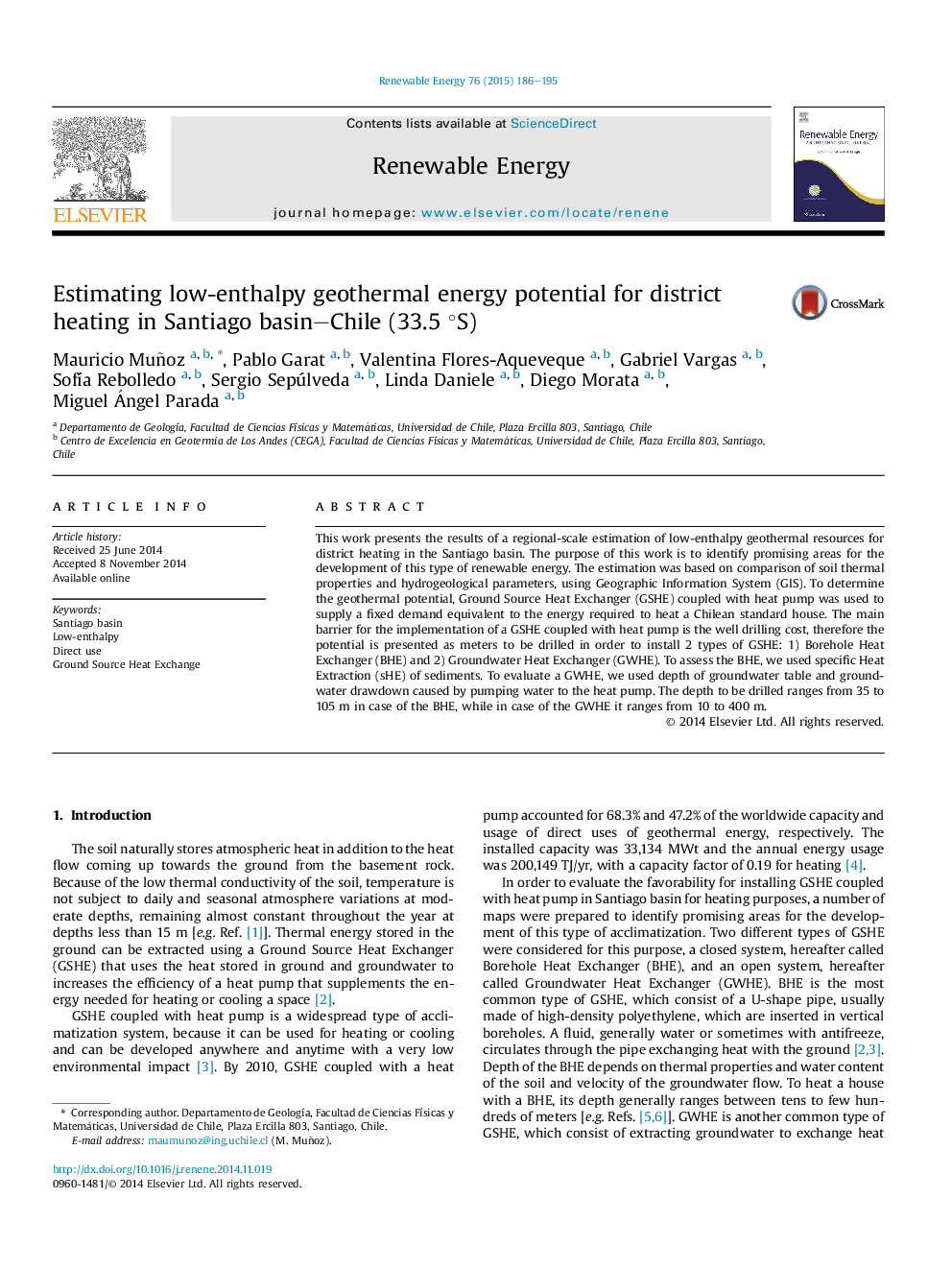| Article ID | Journal | Published Year | Pages | File Type |
|---|---|---|---|---|
| 6767496 | Renewable Energy | 2015 | 10 Pages |
Abstract
This work presents the results of a regional-scale estimation of low-enthalpy geothermal resources for district heating in the Santiago basin. The purpose of this work is to identify promising areas for the development of this type of renewable energy. The estimation was based on comparison of soil thermal properties and hydrogeological parameters, using Geographic Information System (GIS). To determine the geothermal potential, Ground Source Heat Exchanger (GSHE) coupled with heat pump was used to supply a fixed demand equivalent to the energy required to heat a Chilean standard house. The main barrier for the implementation of a GSHE coupled with heat pump is the well drilling cost, therefore the potential is presented as meters to be drilled in order to install 2 types of GSHE: 1) Borehole Heat Exchanger (BHE) and 2) Groundwater Heat Exchanger (GWHE). To assess the BHE, we used specific Heat Extraction (sHE) of sediments. To evaluate a GWHE, we used depth of groundwater table and groundwater drawdown caused by pumping water to the heat pump. The depth to be drilled ranges from 35 to 105Â m in case of the BHE, while in case of the GWHE it ranges from 10 to 400Â m.
Keywords
Related Topics
Physical Sciences and Engineering
Energy
Renewable Energy, Sustainability and the Environment
Authors
Mauricio Muñoz, Pablo Garat, Valentina Flores-Aqueveque, Gabriel Vargas, SofÃa Rebolledo, Sergio Sepúlveda, Linda Daniele, Diego Morata, Miguel Ángel Parada,
